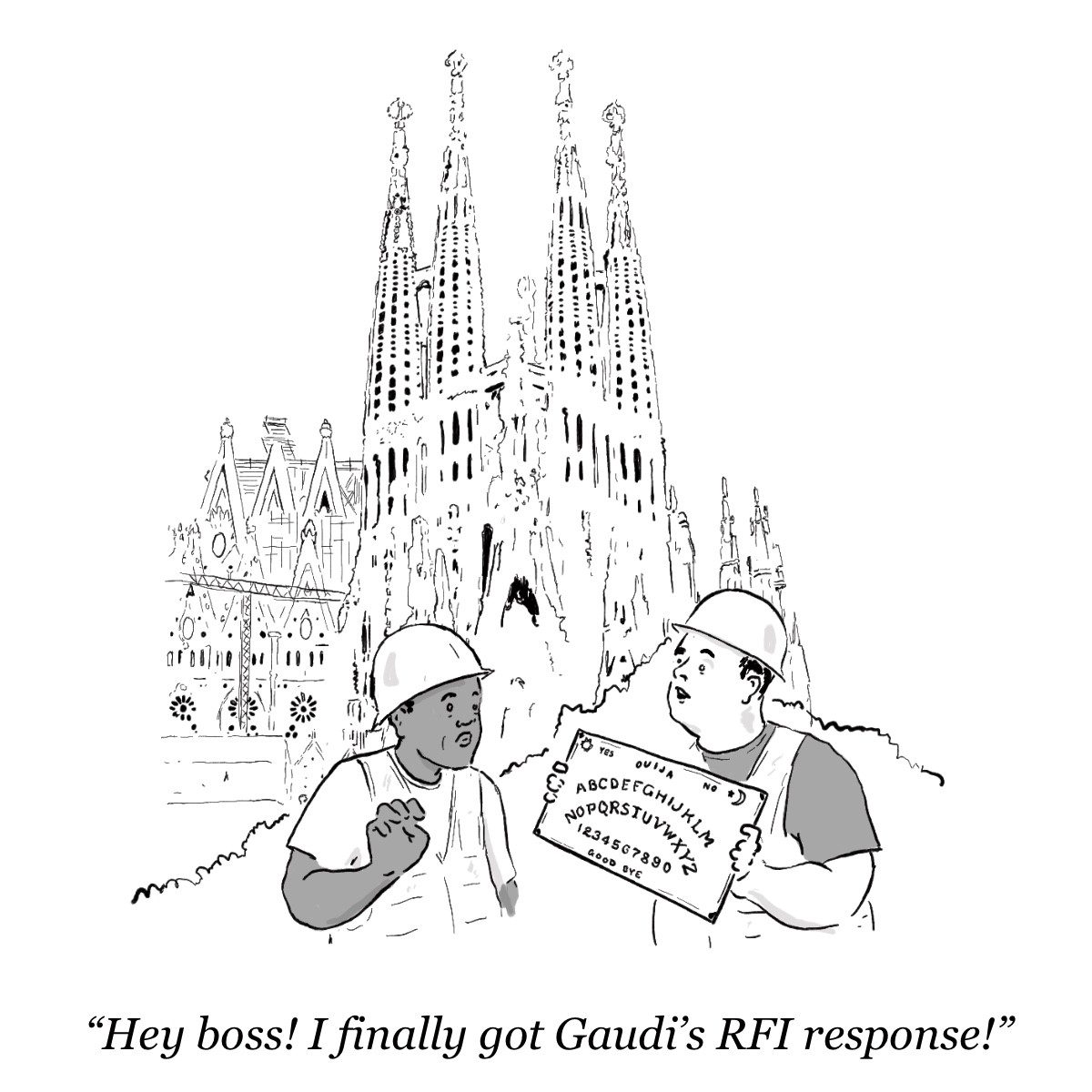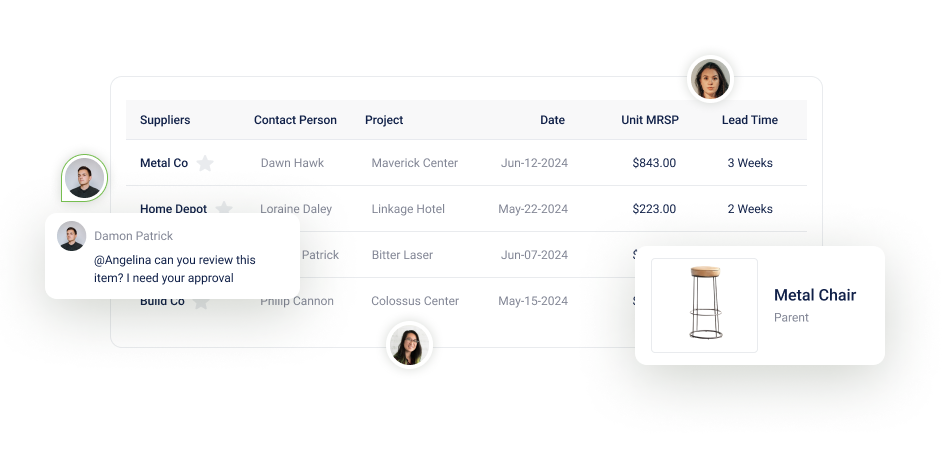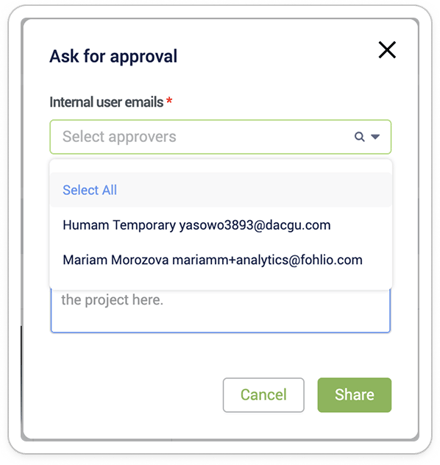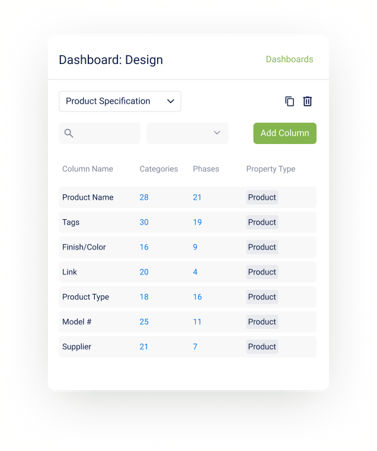
Specify and procure FF&E and OS&E at scale with Fohlio today. Empower teams to move faster and improve their operational workflow with specification, prototyping, procurement, collaboration, and analytics tools.
Approvals shouldn’t feel like pulling teeth.
And yet, here we are — chasing signatures, resending PDFs, re-explaining specs for the third time, and wondering if your stakeholder actually read the email (they didn’t).
So why is getting a “yes” so hard?
It turns out, it’s not just about process.
It’s about psychology— and better approval management.
First: Who Are the Stakeholders?
In a typical design and procurement project, your approval chain probably includes:
- The Designer – focused on aesthetics, brand alignment, and mood boards that must be respected
- The Project Manager – juggling timelines, vendors, and trying to keep everything from flying off the rails
- The Procurement Lead – watching cost, lead times, and vendor compliance like a hawk
- The Client/Owner – focused on big-picture ROI, risk, and long-term outcomes
- The Vendor or Supplier – needing clarity, speed, and finalized decisions to move orders forward
Each one has a different lens.
And when you don’t account for that? Approvals stall.
 Let’s unpack what’s going on in each of their heads — and what you can do about it.
Let’s unpack what’s going on in each of their heads — and what you can do about it.
Decision Fatigue Is Real
Picture this: The client has reviewed five budget updates, denied a furniture upgrade, and is trying to wrap their head around CapEx vs OpEx on three properties.
Now your spec for upgraded pendant lights hits their inbox. They see a number. They don’t see context.
What happens? It sits. For days.
Fix it: Don’t make them think. Serve the exact context they care about: budget impact, long-term value, and how it fits into the overall vision.
Make the “yes” feel obvious.
That’s what good purchase approval looks like.
In Fohlio, you can do this by customizing the columns that your stakeholders see. Add columns that will give them better context.
Lack of Context = Paralysis
Your designer opens the spec book. There’s a vendor listed she’s never worked with. The product is similar to the original — but not quite.
She doesn’t know:
- Why this change was made
- If it still aligns with the design intent
- Whether it’s been approved elsewhere
So she does the safe thing: nothing.
Fix it: Depending on what your stakeholder needs, pair your ask with side-by-side visuals, notes on why the change was made (lead time? pricing? availability?), and confirmation it still meets brand standards.
Confidence is the grease that moves design approval forward.
Too Many Cooks (With No Chef)
The PM is cc’d. So is procurement. So is the client. You assume someone will approve it.
They all assume the same thing.
No one takes ownership, because no one was assigned ownership.
Fix it: Assign a clear approver for each step. Use a workflow tool where each person is tagged, reminded, and nudged — automatically.
No more “I thought they were handling it.” This is where strong approval management makes all the difference.
It’s Not “No” — It’s “Not Right Now”
The procurement lead fully intends to approve the spec update. But they’re in the middle of three RFQs, rechecking vendor certifications, and trying to renegotiate shipping rates.
Your email is unread, buried, and 47th on the priority list.
Fix it: Automate reminders. Track email opens and deliveries. Keep the approval ask tight, clear, and as easy as “Approve / Reject” with a comment.
Reduce the friction, and you reduce the delay.
They’re All Speaking Different Languages
Each stakeholder values different things:
- Design speaks in visuals, feel, and aesthetic consistency
- Procurement speaks in cost, lead time, and compliance
- Clients speak in ROI and long-term value
- PMs speak in schedules and trade coordination
- Vendors speak in product codes and clear direction
Trying to get them all to approve the same thing without tailoring the message?
It’s like running a UN meeting without a translator.
Fix it: Customize your dashboard for each stakeholder. One page, one view, one goal — tailored to their world.
Speak their language. Get faster yeses.
Final Thought: A “Yes” Is Earned — Not Just Sent
Fast approvals aren’t about chasing harder.
They’re about creating clarity, reducing friction, and making the right choice feel like the only choice.
If your approval management process feels like a black hole, Fohlio can help.Track who needs to say yes, when they need to say it, and make it dead simple for them to do it — whether it’s design approval, purchase approval, or both.
Because projects move at the speed of decisions.
Specify and procure FF&E and OS&E at scale with Fohlio today. Empower teams to move faster and improve their operational workflow with specification, prototyping, procurement, collaboration, and analytics tools.
Expore Fohlio
Learn how to:
- Save days of work with faster specification
- Create firm-wide design standards
- Automate and centralize procurement
- Keep your whole team on the same Page
- Manage product data
- Track budget against cost in real time.
- Prepare for asset valuation
Published Mar 31, 2025


-1.png?width=1178&height=451&name=Approval%20(2)-1.png)


